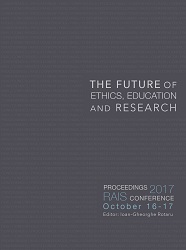Dengue Spread Modeling in the Absence of Sufficient Epidemiological Parameters
Dengue Spread Modeling in the Absence of Sufficient Epidemiological Parameters
Author(s): Jerelyn Co, Jason Allan Tan, Ma. Regina Justina Estuar, Kennedy Espina
Subject(s): Essay|Book Review |Scientific Life
Published by: Scientia Moralitas Research Institute
Keywords: SARIMA; SVM; Dengue Fever; Time Series Modeling; Feature importance
Summary/Abstract: Dengue remains to be a major public health concern in the Philippines, claiming hundreds of lives every year ( Jaymalin 2017). Given limited data for deriving necessary epidemiological parameters in developing deterministic disease models, forecasting as a means in controlling and anticipating outbreaks remains a challenge. In this study, two-time series models, namely Seasonal Autoregressive Integrated Moving Average (SARIMA) and Support Vector Machine (SVM), were developed without the requirement for prior epidemiological parameters. Performances of the models in predicting dengue incidences in the Western Visayas Region of the Philippines were compared by measuring the Root Mean Square Error (RMSE) and Mean Average Error (MAE). Results showed that the models were both effective in forecasting Dengue incidences for epidemiological surveillance as validated by historical data. SARIMA model yielded average RMSE and MAE scores of 16.8187 and 11.4640, respectively. Meanwhile, SVM model achieved scores of 11.8723 and 7.7369, respectively. With the data and setup used, this study showed that SVM outperformed SARIMA in forecasting Dengue incidences. Furthermore, preliminary investigation of one-month lagged climate variables using Random Forest Regressor’s feature ranking yielded rain intensity and value as top possible dengue incidence climate predictors.
Book: The Future of Ethics, Education and Research
- Page Range: 232-242
- Page Count: 11
- Publication Year: 2017
- Language: English
- Content File-PDF

